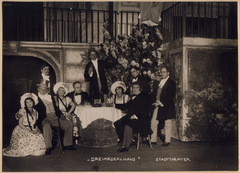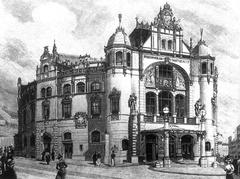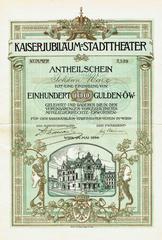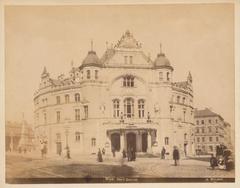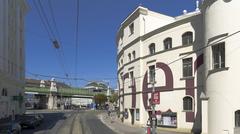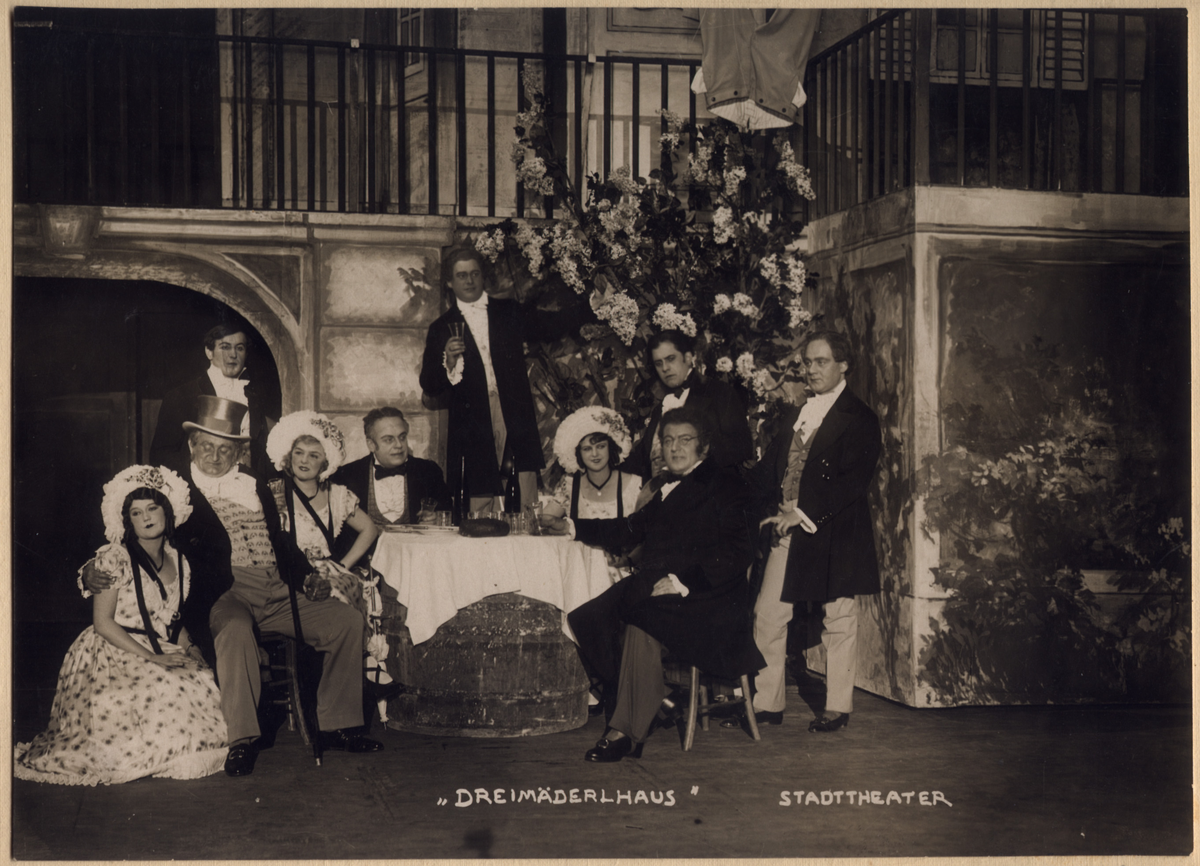
Vienna Volksoper Visiting Hours, Tickets, and Historical Significance: The Complete Guide
Date: 14/06/2025
Introduction
The Vienna Volksoper, or “People’s Opera,” is one of Vienna’s most celebrated cultural institutions, offering an accessible and vibrant experience of opera, operetta, musicals, and ballet. Founded in 1898 to democratize the performing arts, the Volksoper is renowned for its welcoming atmosphere, diverse programming, and architectural elegance in Vienna’s 9th district. This guide provides detailed insights into visiting hours, ticketing, accessibility, historical significance, and practical travel tips—ensuring you make the most of your visit to this iconic venue (Vienna Volksoper official site).
Contents
- Visiting Hours & Ticket Information
- Accessibility & Getting There
- Nearby Attractions & Photographic Spots
- Guided Tours & Special Events
- Historical Overview & Architectural Significance
- Frequently Asked Questions (FAQs)
- Visitor Tips & Local Etiquette
- Conclusion & Further Resources
Visiting Hours & Ticket Information
Box Office Hours
- Monday–Saturday: 10:00 AM – 6:00 PM
- Performance Days: Open until showtime
- Closed: July and August (off-season)
Always consult the official website for performance schedules and any special changes during holidays or events.
Performance Schedule
- Season: September through June
- Productions: Around 300 performances annually, featuring opera, operetta, musicals, and ballet (Vienna Concerts)
How to Buy Tickets
- Online: Volksoper Official Site
- Box Office: On-site, open on performance days
- Authorized Vendors: Vienna Concerts, ViennaTicketOffice
Prices: Range from €15 to €100 depending on production and seating. Discounts available for students, youth, seniors, and groups. Early booking is highly recommended for popular shows (Vienna Unwrapped).
Accessibility & Getting There
Accessibility
- Barrier-free access: Main entrance with bell and ramp for wheelchairs.
- Facilities: Wheelchair seating and accessible restrooms; however, elevator access is limited and not suitable for all wheelchairs (Vienna Info).
- Assistance: Contact the theater in advance for special needs.
Location & Transport
- Address: Währinger Str. 78, 1090 Vienna, Alsergrund district (vienna-trips.at)
- U-Bahn: U6, stop at “Währinger Straße/Volksoper”
- Tram: Lines 40, 41, and 42
- Bus: 37A, 40A
- Taxi and Car: Taxis are available; parking is limited, so public transport is advised (Vienna Unwrapped).
Nearby Attractions & Photographic Spots
Cultural & Historical Sites
- Sigmund Freud Museum: A short walk away, ideal for psychology enthusiasts.
- Votivkirche: Majestic neo-Gothic church in the 9th district.
- University of Vienna: Explore historic architecture and academic heritage.
Dining & Leisure
- Numerous cafes and traditional Viennese restaurants in the vicinity—perfect for pre- or post-performance meals.
Photo Opportunities
- Exterior: The ornate façade and grand entrance.
- Interior: Grand staircase, stucco-decorated auditorium, plush seating, and historic balconies.
Guided Tours & Special Events
- Guided Tours: Occasional behind-the-scenes tours; booking in advance advised via the official website.
- Special Events: Family-friendly performances, open rehearsals, world premieres (e.g., Ella Milch-Sheriff’s “Alma” in the 2024/25 season) (Volksoper Season Preview).
Historical Overview & Architectural Significance
Founding and Early Years (1898–1918)
Established as the Kaiserjubiläum-Stadttheater in 1898, the Volksoper’s mission was to make high-caliber opera accessible to all social classes. Its inaugural performance was Beethoven’s “Fidelio,” marking a commitment to artistic excellence and inclusivity (ViennaTicketOffice).
Interwar Period (1919–1938)
The Volksoper flourished as Vienna’s premier stage for operetta, democratizing this light-hearted genre with works by Strauss and Lehár (ViennaTicketOffice).
World War II and Postwar Era (1938–1970s)
Despite wartime censorship, the Volksoper remained culturally significant, even serving as the temporary home for the Vienna State Opera after WWII (Wiener Staatsoper History, Britannica). After 1955, it expanded its repertoire, including musicals and ballet.
Contemporary Period (1980s–Present)
With 1,337 seats and over 300 annual performances, the Volksoper remains Vienna’s second-largest opera house. It continues to blend tradition with innovation, fostering new productions and international collaborations (Vienna Concerts).
Architectural and Cultural Significance
The Volksoper’s elegant Gründerzeit architecture features ornate stucco work, a grand staircase, and gilded details. The building stands as a symbol of Vienna’s “fin-de-siècle” optimism and continues to serve as a vibrant hub for the performing arts (ViennaConcerts).
Visitor Tips & Local Etiquette
- Dress Code: No strict code, but smart casual is encouraged. Evening wear is typical for premieres; casual attire is acceptable (The Vienna Blog).
- Arrival: Arrive 20–30 minutes early to enjoy the foyer and settle in.
- Cloakroom: Coats and large bags must be left in the cloakroom; box guests have dedicated cloakrooms (Wiener Staatsoper practical info).
- Intermission: Enjoy refreshments at the buffet in the historic foyer.
- Language: Most performances are in German; English surtitles are available for many shows (Vienna Info).
- Photography: Not permitted during performances.
- Accessibility: Contact the theater in advance for mobility assistance.
Frequently Asked Questions (FAQs)
What are the Vienna Volksoper visiting hours?
Box office: 10:00 AM–6:00 PM (Mon–Sat); open until showtime on performance days. Closed July/August.
How do I buy tickets?
Online via the official site, at the box office, or through authorized vendors.
Is the venue accessible?
Yes, but some limitations exist. Wheelchair users should contact the theater in advance (vienna-trips.at).
Are there English surtitles?
Yes, for many operettas and musicals.
What is the dress code?
Smart casual; elegant attire for premieres is welcome.
Practical Travel Advice
- Use public transport for convenience; parking is limited.
- Check for English surtitles if you are not fluent in German.
- Book tickets early for popular shows, especially during peak season (September–June).
- Explore the Alsergrund district: Museums, cafes, and historic sites nearby make for a fulfilling day.
Conclusion
The Vienna Volksoper stands as a testament to Vienna’s enduring musical legacy, offering a harmonious blend of tradition, innovation, and accessibility. With its diverse programming, affordable ticketing, and architectural grandeur, the Volksoper invites visitors of all backgrounds to become part of Vienna’s vibrant cultural tapestry. For the latest schedules, tickets, and visitor tips, consult the Volksoper’s official website, download the Audiala app for real-time updates, and follow us on social media for exclusive content and insider guides.
Further Reading & Sources
- Vienna Volksoper official site
- Vienna Concerts
- Vienna Info
- ViennaTicketOffice
- Wiener Staatsoper History
- Britannica
- Vienna Unwrapped
- ShunCulture
- The Vienna Blog
- Vienna-trips.at
- Connecting Vienna: Alsergrund
